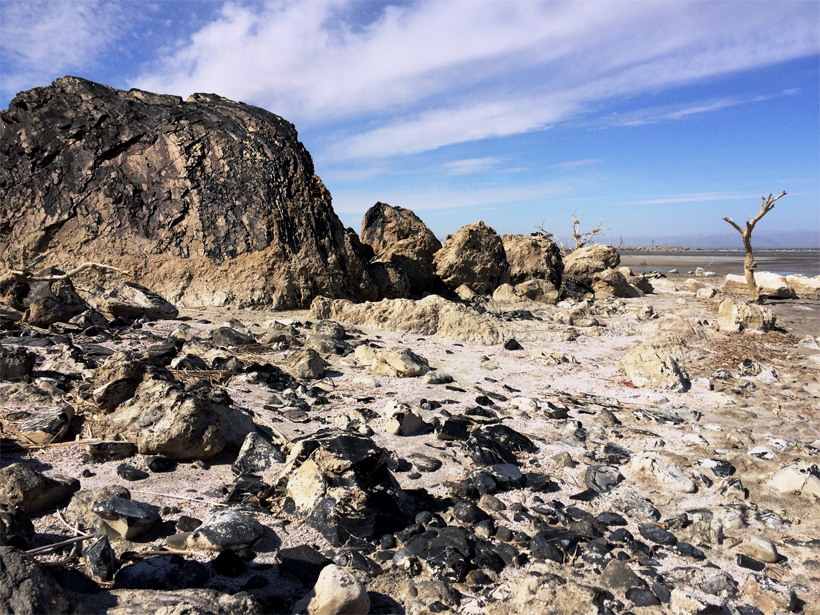Source: Geochemistry, Geophysics, Geosystems
Radioisotope dating of Holocene volcanic rocks is inherently difficult because radioactive decay daughters have had little time to accumulate. Where radiocarbon dating is not possible, detailed mapping combined with a variety of dating techniques may be necessary to resolve an eruption history.
Such is the case in Southern California’s Salton Trough, a pull-apart basin between strike-slip faults along the Pacific–North American plate boundary, where five buttes with an estimated total volume of more than 5 cubic kilometers erupted along the Salton Sea’s southern tip. Because the Salton Buttes are still exposed in an area of rapid sedimentation near the Colorado River, a previous study estimated that they must have erupted during the Holocene, which began roughly 11,700 years ago, or the late Pleistocene just before that, but their exact ages have been difficult to determine—lava domes much older than that would have been buried by sediment and subsidence by the present day.
To better constrain the buttes’ history, Wright et al. present the results of three independent dating techniques—40Ar/39Ar anorthoclase ages, 238U-230Th zircon crystallization ages, and a comparison of signatures of the shifting direction of Earth’s magnetic field with the Holocene secular variation curve—which agree that the five dome-shaped buttes were all formed during the Holocene. Despite the domes’ similar compositions, their paleomagnetic characteristics indicate that they erupted during three distinct episodes of volcanism, separated by up to several hundreds of years. The combined data also suggest that the duration of Salton Buttes volcanism lasted between 500 and 5900 years. This approach demonstrates the potential for combining advanced analytical techniques to yield meaningful dates, even for very recent eruptions. (Geochemistry, Geophysics, Geosystems, doi:10.1002/2015GC005714, 2015)
—Terri Cook, Freelance Writer
Citation: Cook, T. (2015), Dating lava domes in California’s Salton Trough, Eos, 96, doi:10.1029/2015EO039115. Published on 10 November 2015.
Text © 2015. The authors. CC BY-NC 3.0
Except where otherwise noted, images are subject to copyright. Any reuse without express permission from the copyright owner is prohibited.

